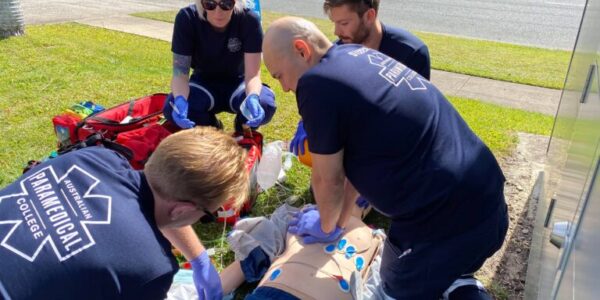Re-published 11th June, 2024.
There is no denying that Australia may be best known for its dangerous wildlife, and on top of that list would have to be our snakes. Whilst snake bites aren’t exactly common, each should still be treated cautiously as though they are life-threatening.
To jump straight to snake bite first aid, click the button below.
How many snakes are venomous in Australia?
Australia homes more venomous snakes than anywhere else globally. Whilst this statistic is not in our favour, it is essential to know that out of 100 odd snakes, only 12 are likely to inflict wounds harsh enough to kill*.
*NSW Government – Environment and Heritage (June 2024)
Are Australian snakes really that dangerous?
Truthfully, they’re not. Thanks to the National Antivenom Program introduced in the 1960s and successful public education programs, there is only an average of two deaths per year from snake bites in Australia from approximately 3,000 bites*
*National Libray of Medicine (June 2024)
How to prevent an Australian snake bite
It is important to know that some of Australia’s deadliest snakes (like an Eastern Brown or Inland Taipan) aren’t actually aggressive and will only bite to defend themselves or their young.
As shared by Curator of NT’s Territory Wildlife Park, Dion Wedd, “Snakes don’t perceive humans as food and they don’t aggressively bite things out of malice. Their venom is used to subdue prey that would otherwise be impossible for a snake to eat…If their only escape route is past a human with a shovel, then they are likely to react in the only way they can”*.
The best way to prevent a snake bite is to leave the snake alone. Your best two options are to wait for the snake to slither away or walk away yourself.
*Rita’s Outback Guide ( June 2024)
Australian snake bite signs and symptoms
Summertime is often the most common time for bites, as snakes are cold-blooded. During the winter, they hide and hibernate to conserve their energy. In the summer (and months leading up/closing off), snakes search for the sun to warm themselves up, which is often when we see them out and about.
Worryingly, sometimes, you may not know if a snake has bitten you. If you’re hiking, a snake bite could be confused for a stick snapping and scratching your leg. On top of this, some symptoms may not show for an hour.
Some general Australian snake bite symptoms can include but are not limited to, bleeding from the bite mark and generalised swelling/pain around the bite area. As mentioned earlier, just being bitten by a snake does not mean your life is at risk, but each bite should be treated as though it is life-threatening in the case it is.
Where you have been bitten, and the snake has injected venom into your bloodstream, symptoms can include:
- Irregular heartbeat
- Nausea
- Abdominal pain
- Headaches and dizziness
- Difficulty breathing
- Weak muscles/paralysis
If you feel you are at risk, call triple zero (000) immediately.
How to treat an Australian snake bite
According to the Australian Resuscitation Council, the best first aid treatment for all Australian snake bites is to minimise the venom’s movement through the body using the Pressure Immobilisation Technique or PIT for short*.
*Australian and New Zealand Resuscitation Council (June 2024)
To apply the PIT, first, be sure that the scene is clear of danger and follow these five steps:
- Lie the person down or sit them up supported and stop all movement. Don’t wash the bandage, nor cut and suck the bite. DO NOT try to catch or kill the snake, or you’ll likely end up with a matching bite of your own.
- Call 000 and try your best to calm the person down, as this will slow down their breathing and pulse rate and may slow the transport of venom through the lymphatic system.
- Apply a wide compression bandage to the bitten limb, starting at the fingers or toes and bandaging up toward the body to cover the entire limb. Any wide elasticised bandage will do, but you can now get bandages specifically for snake bites with a tension indicator to help achieve the ideal compression.
- Mark the bandage at the bite site for reference at the hospital.
- Finally, immobilise the bitten limb in a sling or by splinting it to a rigid object of similar length or even the opposite leg.
Now, the best you can do is wait patiently for the ambulance to arrive while encouraging the person to stay calm.
For a handy quick reference guide on the go for this and other first aid tips this summer, we recommend downloading the free app produced by the Australian Venom Research Unit called Australian Bites & Stings.


